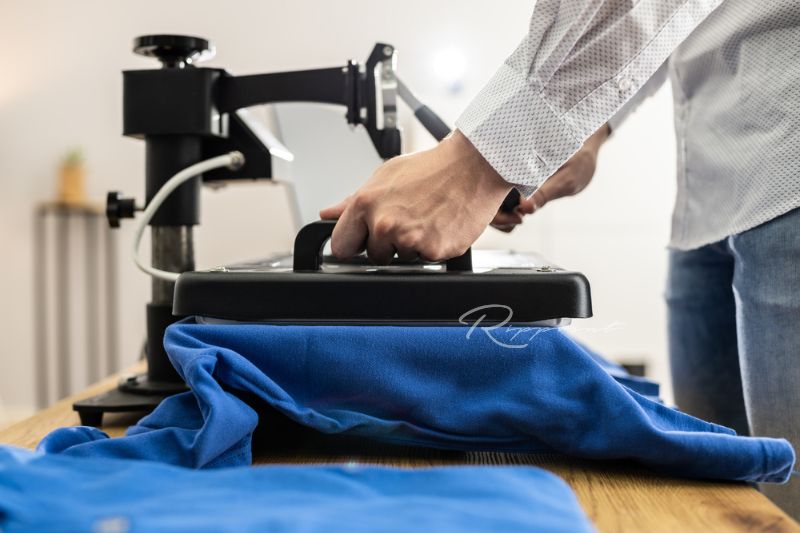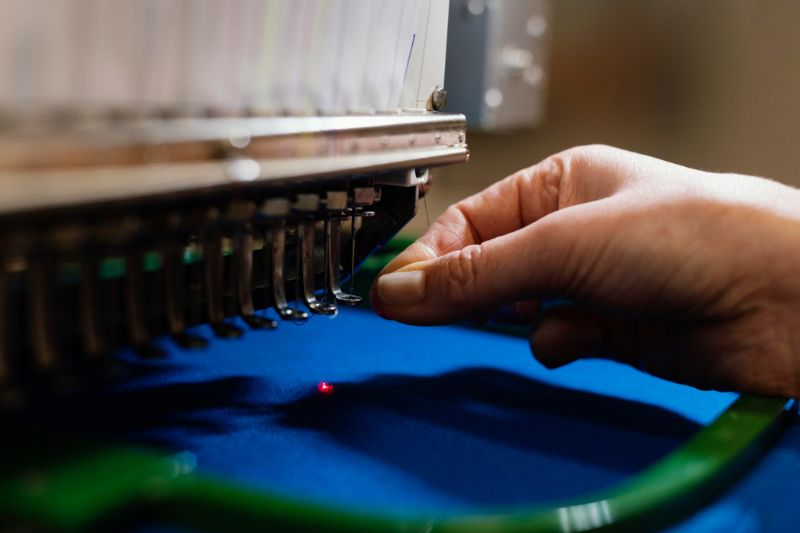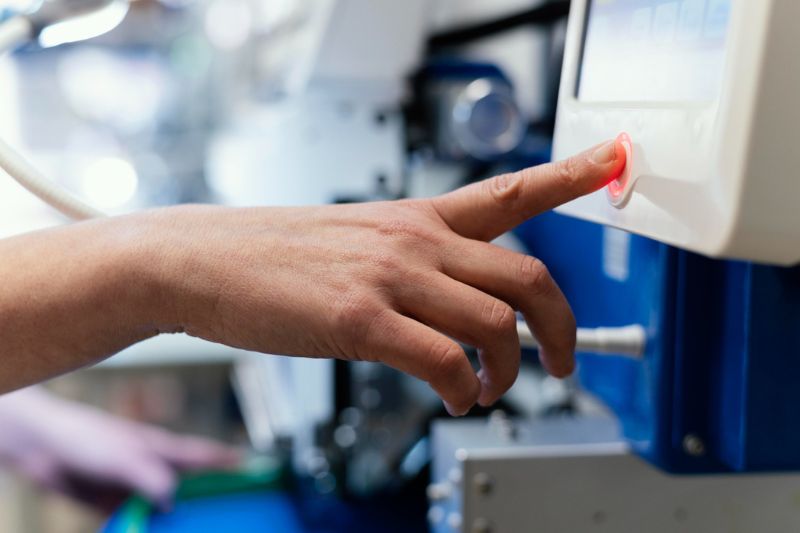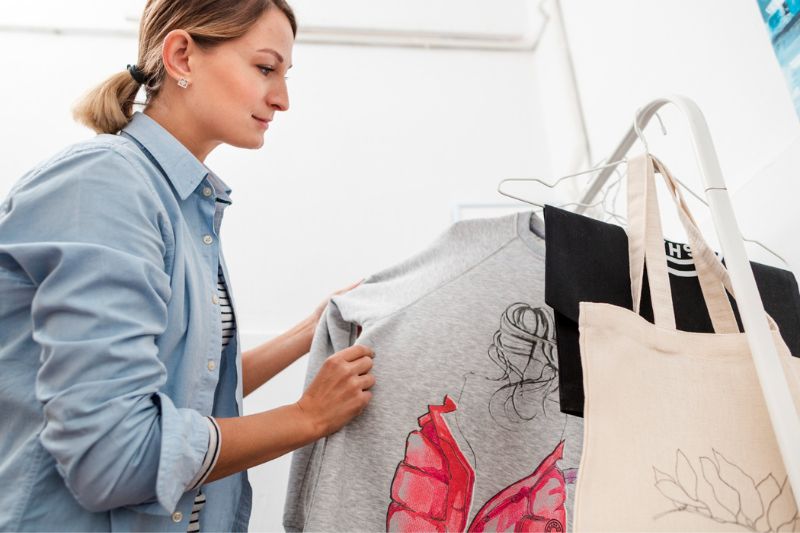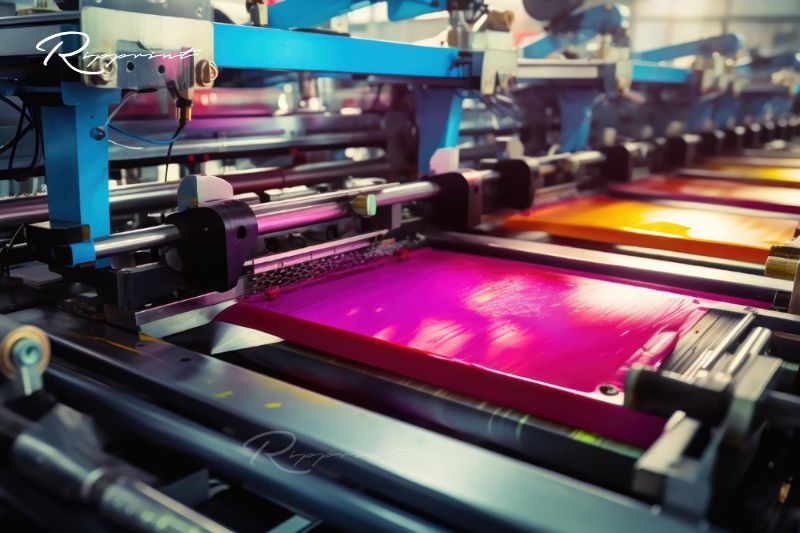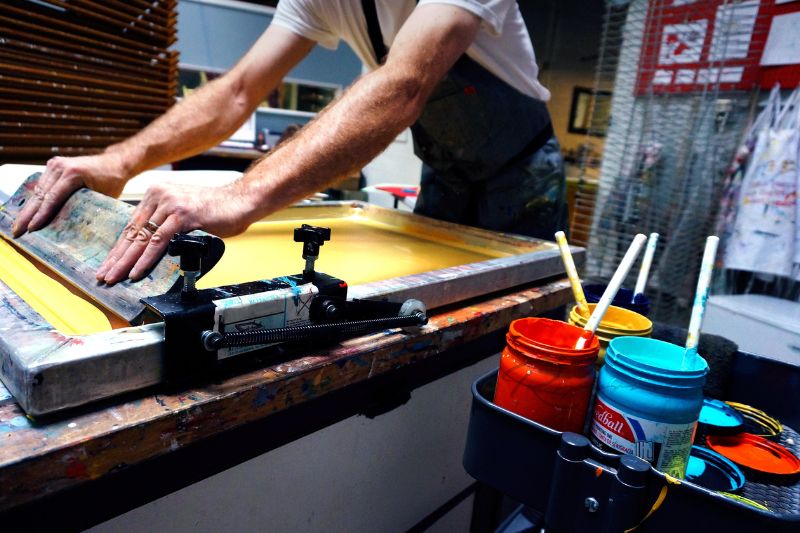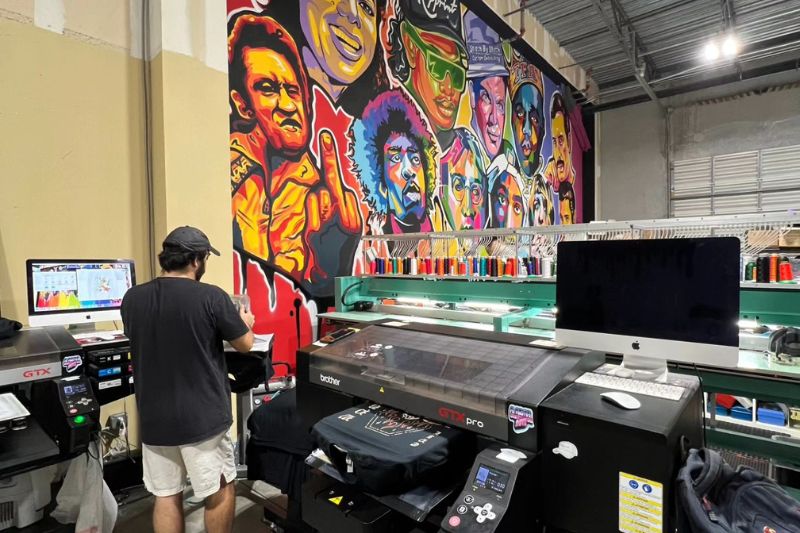In the world of fashion, customization reigns supreme. Custom screen printing provides a flexible and efficient option for a variety of purposes, including brand promotion, event commemoration, and personal style expression. When it comes to screen printing clothing, the options are virtually limitless, ranging from t-shirts to hoodies, and hats to tote bags. We’ll go into the realm of custom screen printing in this blog article, covering its methods, uses, and the limitless possibilities it presents for your wardrobe or company.
Understanding Screen Printing
Fundamentally, screen printing is the process of applying ink through a mesh screen onto a substrate (like fabric). Vibrant and complex designs can be produced since each color in the design needs its stencil and screen. Screen printing is a popular option for bespoke garments because of its adaptability, which allows it to precisely accommodate minor details as well as big graphics.
The Process Unveiled
Design Creation: A design is the first step in any screen printing project. Paying close attention to detail is essential whether you’re creating your artwork or collaborating with a professional graphic designer. Recall that you will need a different stencil and screen for every color in your design, so keep things simple.
Screen Preparation: After your design is complete, the screens need to be ready. This entails applying a light-sensitive emulsion to the mesh screens and exposing them to UV light while your design is viewed via a film-positive. The sections that are exposed to light will solidify, forming the stencil that allows the ink to seep into the fabric.
Printing: Now that your screens are prepared, it’s time to realize your design. The cloth is laid down flat, and using the proper screen and ink, each color of the design is applied one at a time. During this phase, consistency and precision are essential to achieving a clean, polished outcome.
Curing: To guarantee durability and colorfastness, the ink needs to be cured once it has been applied. This usually entails running the printed clothing through a heat press or dryer set to a high temperature, which sets the ink into the fabric.
Final Touches: Your custom-printed clothing is now ready for the finishing touches following curing. This could include folding, packing, and cutting off any extra threads before distributing or displaying the product.
Applications of Custom Screen Printing
Branding: Custom screen printing is a potent branding tool for companies and organizations. Whether you’re designing staff uniforms or promotional items to give away, branded clothing contributes to the presentation of a unified and polished image.
Events & Celebrations: Custom screen printed t-shirts are a popular choice for remembering significant occasions, such as family reunions and music festivals. They not only act as mementos but also contribute to the participants’ feelings of solidarity and brotherhood.
Fashion and Expression: Custom screen printing is a way for people to express themselves. Custom printed clothing makes you stand out from the crowd whether you’re showing off your artwork, spreading a message, or just showing off your style.
Tips for Success
Select High-Quality Materials: Your printed clothing’s quality starts with the materials you select. To guarantee the greatest possible printing quality and the appearance of your designs, choose premium clothing.
Work with Experts: Although kits for do-it-yourself screen printing are available, hiring experts can save you time, and effort, and guarantee better results. Collaborating with a trustworthy screen printing company can yield many benefits, ranging from flawless printing quality to design support.
Try New Things with Design: Don’t be scared to use your imagination when creating designs. Experimentation can provide genuinely original and striking results when experimenting with colors, textures, and printing methods.
Think About Sustainability: The need for sustainable printing techniques is growing along with environmental consciousness. To reduce your environmental impact, look for screen printing companies that place a high value on eco-friendly inks, water-saving methods, and ethical sourcing.
Benefits of Custom Screen Printing
Of course! Let’s examine the advantages of screen printing t-shirts, custom t-shirts, apparel, and t-shirt printing in more detail:
1. Versatility:
T-shirt Screen Printing: T-shirt screen printing is a versatile design technique that can be used to apply elaborate graphics, strong logos, and vivid colors to a variety of fabric kinds.
Custom screen printing: This technique offers the freedom to print one-of-a-kind graphics according to particular tastes for events, promotions, or personal use.
T-shirts with custom screen printing: With custom screen printing, people and companies may design individualized clothing that showcases their logo, artwork, or messaging.
Apparel Screen Printing: Suitable for a variety of tastes and styles, apparel screen printing goes beyond t-shirts to allow customization of hoodies, sweatshirts, caps, and other items.
2. Brand Promotion:
T-shirt screen printing: T-shirts are a powerful tool for advertising brands, companies, occasions, and causes since they act as walking billboards.
Custom screen printing: By imprinting logos, phrases, or other branding components onto clothing, companies can increase brand awareness and recognition.
T-shirts with custom screen printing: Custom screen printed t-shirts help businesses reach a wider audience and build brand awareness. They also function as wearable marketing materials.
Apparel screen printing: By tailoring a range of clothing items to fit various marketing strategies and target audiences, apparel screen printing enables companies to promote their brands beyond t-shirts.
3. Unity and Identity:
T-shirt screen printing: Whether in athletics, education, or the workplace, t-shirts featuring team- or community-specific designs promote a sense of cohesion and belonging.
Custom Screen Printing: Custom screen printing fosters a sense of pride and unity by enabling people and organizations to express their personalities, affiliations, or interests through custom-designed clothing.
T-shirts with custom screen printing: T-shirts with custom screen printing strengthen ties and promote a feeling of community by acting as tangible symbols of common interests, values, or experiences.
Apparel screen printing: This technique enables people and organizations to select clothing that perfectly captures their styles and personalities by providing a vast array of customization options to accommodate a variety of identities and preferences.
4. Memorabilia and Souvenirs:
T-shirt screen printing: People can treasure and remember unforgettable occasions by wearing screen-printed t-shirts, which act as physical keepsakes of special occasions, trips, or experiences.
Custom screen printing: With custom screen printing, companies, and groups may produce branded goods, mementos, or handouts that make an impression on clients, consumers, or attendees of events.
Custom Screen Printing T-Shirts: Personalized screen-printed t-shirts are treasured relics, mementos, or souvenirs that honor noteworthy events, occasions, or accomplishments.
Apparel Screen Printing: To suit a variety of tastes and objectives, apparel screen printing provides a broad selection of garment alternatives for personalized keepsakes, mementos, or promotional goods.
5. Creativity and Expression:
T-shirt screen printing: This technique gives people a platform to express their creativity and make comments about their passions, artistic abilities, or wearable art.
Custom Screen Printing: Using original artwork, designs, or statements that represent their hobbies, beliefs, or personalities, custom screen printing enables people to realize their visions.
Custom screen printing t-shirts: By enabling users to express their personalities, beliefs, or connections through personalized clothing, custom screen printed t-shirts provide a platform for self-expression and individuality.
Apparel screen printing: This process allows people to express themselves creatively in countless ways by customizing a wide range of clothing with unique patterns, motifs, and designs that speak to their aesthetic tastes and values.
Types of Custom Screen Printing
A variety of approaches and strategies are used in custom screen printing to create distinctive and customized patterns on clothing and other textile surfaces. These are a few of the most popular varieties of personalized screen printing:
1. Spot Color Printing:
With this technique, individual screens are used to print each color of the design independently. Designs with distinct details and solid colors work best with it.
When printing graphics, text, and logos that need exact color matching, spot color printing is frequently utilized.
2. Four-Color Process Printing (CMYK):
This method, which is sometimes referred to as process printing or full-color printing, creates a broad spectrum of hues and shades by combining four ink colors—cyan, magenta, yellow, and black.
Photographs, intricate artwork, and patterns with gradients can all benefit from four-color process printing.
3. Simulated Process Printing:
With a restricted number of ink colors—typically six to eight—full-color or photorealistic images can be replicated through the use of simulated process printing.
To attain realistic results and replicate a wider color gamut, halftone screens for each color must be created.
4. Discharge Printing:
Using a discharge agent to extract the dye from the fabric and leave behind a light-colored imprint is known as discharge printing.
This technique is frequently applied to dark-colored clothing to produce delicate, vintage-inspired patterns with a subdued color scheme.
5. Water-Based Printing:
Environmentally friendly and water-soluble inks are used in water-based printing. The cloth absorbs these inks, creating a print that is supple and permeable.
For designs that call for a soft hand feel and light-colored clothing, water-based printing is perfect.
6. Plastisol Printing:
Plastisol printing is a widely used technique that bonds with cloth by curing a PVC-based ink with heat.
It works well with a variety of clothes and styles because it creates prints that are bright, durable, and have a slightly raised texture.
7. High-Density Printing:
Using a unique ink or additive, high-density printing produces raised or textured effects on the printed surface.
This method makes designs pop off the fabric by giving them dimension and tactile appeal.
8. Foil Printing:
By applying a metallic foil to the printed surface with pressure and heat, foil printing produces a glossy, reflective finish.
It is frequently utilized to give designs an opulent and striking touch, particularly for special occasions or high-end goods.
9. Glow-in-the-Dark Printing:
Special phosphorescent inks are used in glow-in-the-dark printing to capture, store, and release light energy during the dark to produce a luminous effect.
This method is frequently applied to novelty designs, kid’s clothing, and promotional goods.
10. Specialty Inks and Effects:
To create distinctive and eye-catching designs, custom screen printing can use a variety of specialty inks and effects, including metallics, glitter, puff, and reflecting inks.
These effects make printed clothing stand out from the crowd by enhancing its appeal and adding visual interest.
Custom screen printing comes in a variety of forms, each with its benefits and features that open up countless creative and customizing options. With the right printing method, you may get amazing, customized outcomes that up your apparel game, depending on the design, fabric, and desired output.
T shirt Screen Printing
In the world of clothing customization, t-shirt screen printing is a mainstay since it provides a classic and adaptable way to turn basic textiles into wearable artwork. Screen printing is an incredibly precise and creative method that can produce anything from graphically striking images to complex designs. We explore the complex world of t-shirt screen printing in this investigation, learning about its methods, uses, and timeless appeal.
The Craftsmanship Behind T-Shirt Screen Printing
T-shirt screen printing is essentially a painstaking procedure that entails transferring ink onto a cloth over a mesh screen to produce vivid and long-lasting graphics. Extensive multi-color designs can be precisely created with a separate stencil and screen for each color in the design. A design is first created and then transferred onto a fine mesh screen that has been covered with a light-sensitive emulsion. UV light exposure hardens the emulsion in the design-corresponding portions, creating a stencil that allows ink to transfer onto the fabric.
Techniques and Tools of the Trade
Design Preparation: The design is carefully considered and ready before the printing process starts. Whether it’s a complex picture, artwork, or corporate brand, the design is meticulously translated into distinct layers that, when printed, each represent a distinctive hue.
Screen Preparation: After the final design is decided upon, screens are carefully coated with the light-sensitive emulsion. After the film positives for the design are lined up with the screens and exposed to UV light, the emulsion hardens into the desired shape.
The selection of ink is an important factor that affects the final print’s brilliance, durability, and texture. Plastisol inks have great opacity and vivid colors, but water-based inks feel softer and more breathable.
Printing Process: After the screens are ready and the inks are chosen, printing may begin. The fabric is fastened onto a level surface, and the matching screen and ink are used to apply each color in the design successively. To guarantee clear and consistent prints, accuracy and consistency are essential.
Curing and Finishing: To guarantee longevity and colorfastness, the printed clothing is subjected to a curing procedure once the ink has been placed. To fuse the ink with the fabric, this usually entails running them through a heat press or high-temperature drier. After that, the completed clothing is quality-inspected and any last adjustments are made before packaging.
Applications of T-Shirt Screen Printing
Marketing and branding: Businesses and organizations can effectively spread their message and brand by using t-shirt screen printing. Company logos, taglines, or promotional artwork printed on bespoke t-shirts serve to raise brand awareness and forge a cohesive identity among both clients and staff.
Events & Celebrations: Custom-printed t-shirts are a popular choice for marking important occasions, such as music festivals and family reunions. They are useful marketing tools for event planners as well as physical keepsakes that encourage togetherness and friendship among attendees.
Fashion and Personal Expression: Screen printing t-shirts gives people a platform to exhibit their creativity and sense of self. Custom-printed t-shirts provide wearers the opportunity to stand out from the crowd and make a statement, whether it be by displaying original artwork, sharing personal beliefs, or just showing off distinctive designs.
Advantages of T-Shirt Screen Printing
Versatility: T-shirt screen printing is incredibly versatile, enabling the application of a vast array of patterns, hues, and textures to different fabric surfaces. Screen printing is a versatile technique that can easily fit a wide range of materials and clothing types, be it mixes or cotton.
Durability: The lifespan and durability of screen-printed designs are well-known. Prints that are made to last and retain their brilliant colors over time can be achieved by directly applying ink to the fibers of the fabric.
Customization: When it comes to t-shirt screen printing, the options are virtually limitless. Screen printing enables exact and thorough customization to meet specific needs and preferences, whether it’s adding individualized names, numbers, or pictures.
Cost-Effectiveness: T-shirt screen printing is quite cost-effective, particularly for large orders. Higher volumes result in a lower cost per item, which makes it a cost-effective choice for individuals, companies, and organizations seeking to make unique clothing on a tight budget.
Custom Screen Printing
Custom screen printing is an example of how creativity and technology can coexist, providing a means for people and companies to bring their ideas to life. This elaborate method involves carefully applying ink to cloth using mesh screens, producing vivid, long-lasting, and customized graphics. We explore the art of custom screen printing in this article, highlighting its uses, applications, and unmatched value in the realm of clothing customization.
Unveiling the Process:
The process of creating a custom screen print involves several steps, starting with designing the design. Whether it’s a personalized statement, artwork, or business logo, the design acts as the finished product’s blueprint. Screens are then prepared by applying a light-sensitive emulsion coating and subjecting them to UV light via a design film positive. The emulsion is solidified during this procedure, forming the stencil that allows the ink to transfer onto the fabric.
The printing procedure starts after the screens are ready. For accurate color registration and layering, every color in the design needs its screen. Vibrant and clear prints are produced by applying ink on the screens and using a squeegee to push the ink through the mesh onto the fabric. The clothing is heated to a high temperature after each color is applied to guarantee that the ink adheres firmly to the fabric and produces a finish that is robust and long-lasting.
Elevating Brand Identity:
Custom screen printing is an effective tool for companies looking to improve the visibility and distinctiveness of their brands. Businesses may imprint their logos, slogans, and messaging onto premium clothing through custom screen printing, whether it’s for company uniforms, promotional items, or branded clothes. This strengthens client loyalty and strengthens employee unity in addition to enhancing brand recognition.
Personalized Expression:
Custom screen printing gives people a way to exhibit their creativity and individuality. bespoke screen printing offers countless options for self-expression, whether it’s making one-of-a-kind gifts for loved ones, producing bespoke t-shirts for a special occasion, or exhibiting original artwork. Custom designs that can be made to fit specific tastes enable a very meaningful and customized experience, transforming everyday clothing into wearable artwork.
Quality and Durability:
The capacity of custom screen printing to produce prints that are durable and of excellent quality is one of its main benefits. Screen printing creates long-lasting prints that resist fading or cracking over time, in contrast to conventional printing techniques. Custom screen printing is an investment in both style and longevity since it uses premium inks and appropriate drying methods to keep prints vivid and intact through several washings.
Sustainability and Eco-Friendliness:
A growing number of custom screen printing businesses are adopting sustainable techniques to reduce their environmental impact in an era of growing environmental consciousness. Sustainable screen printing choices are becoming more widely available. These include using eco-friendly cleaning products and water-based inks as well as using energy-efficient production techniques. Custom screen printing can benefit both individuals and businesses while lessening their environmental effects through the adoption of ecologically conscious printing processes.
Conclusion
There is a wide variety of methods available with custom screen printing to make customized clothing. Every technique offers different possibilities and effects, ranging from specialty techniques like foil and discharge printing to spot color and four-color process printing. Custom screen printing offers countless creative and customizable options, whether you’re going for vivid colors, realistic graphics, or textured finishes. This makes RIPPrint a flexible and powerful option for branding, events, and self-expression.


